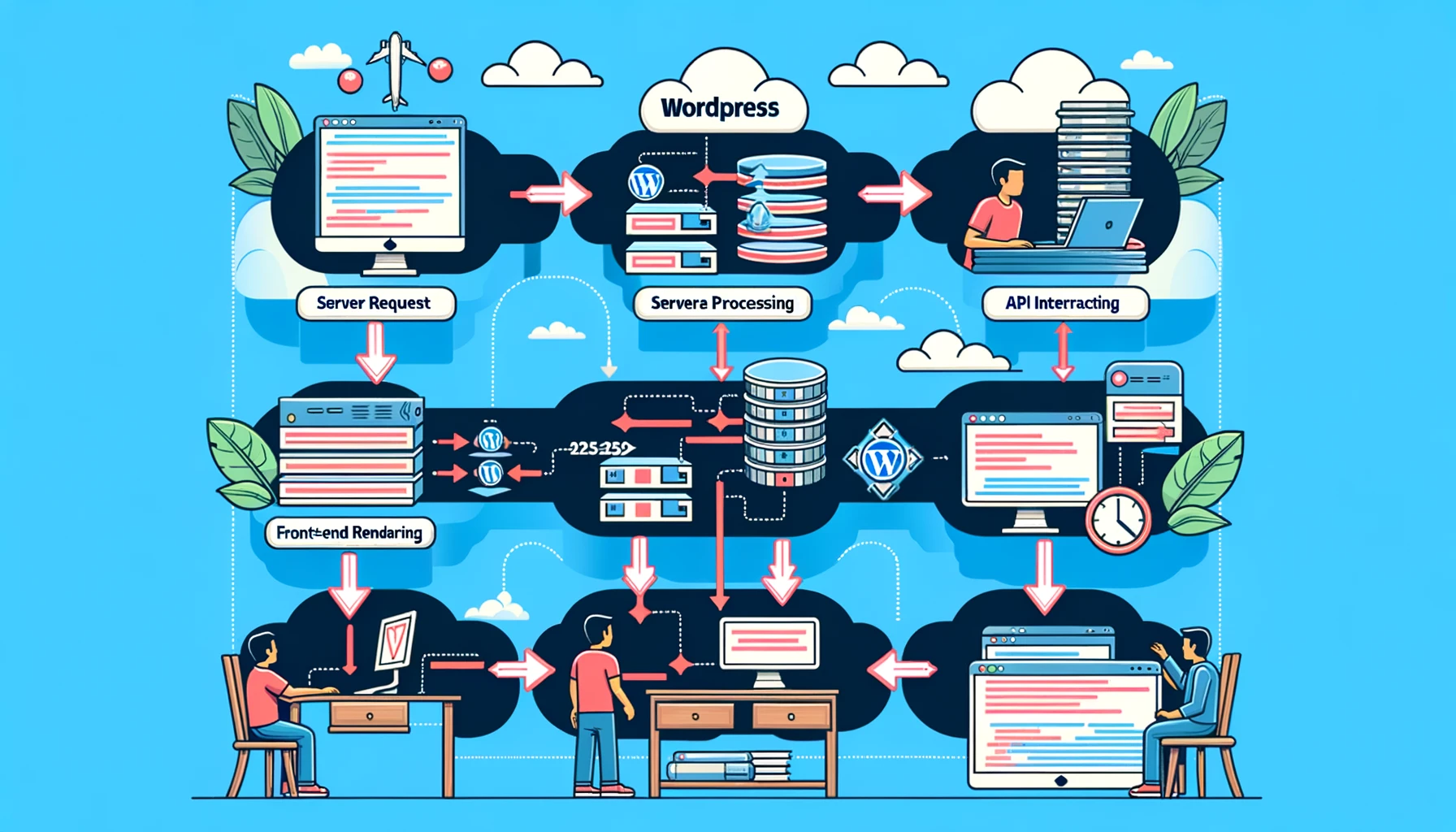Understanding the Inner Workings: A Comprehensive Guide to WordPress Headless CMS Workflow
In the ever-evolving world of web development, the term ‘Headless CMS’ has been gaining significant traction, particularly in the realm of WordPress. This guide aims to shed light on the inner workings of the WordPress Headless CMS workflow, providing a clear and comprehensive understanding for developers, content creators, and digital enthusiasts alike.
What is a WordPress Headless CMS?
Before we dive into the workflow, let’s define what we mean by a “Headless CMS.” In traditional CMS setups, the content management system (CMS) handles both the backend content management and the frontend content presentation. However, in a headless CMS, these two layers are decoupled. WordPress, serving as the backend, manages and stores content, while a separate system, typically a modern JavaScript framework like React or Next.js, handles the presentation on the frontend.
The Workflow Explained

1. User Request
Our journey through the WordPress Headless CMS workflow begins with a user request. This could be someone visiting your website and wanting to view a blog post, access a product page, or interact with any other piece of content. The user’s browser sends a request to the frontend application, initiating the workflow.
2. Frontend Reception
Upon receiving the user’s request, the frontend application, which could be built with technologies like Next.js or Gatsby, processes the request. Since the frontend is decoupled from the WordPress backend, it needs to fetch the required content to fulfill the user’s request.
3. API Call to WordPress
To retrieve the necessary content, the frontend makes an API call to the WordPress backend. This is typically done using the WordPress REST API or GraphQL. The API call requests the specific content or data needed to render the requested page or feature.
4. WordPress Processing
Once WordPress receives the API call, it processes the request by querying its database for the requested content. WordPress then packages this content into a structured format, usually JSON, and sends it back to the frontend application through the API.
5. Frontend Rendering
With the requested content now in hand, the frontend application renders the page or component for the user. This involves transforming the JSON data received from WordPress into HTML and CSS, creating the visual and interactive elements that the user interacts with on their device.
6. Final Display
The final step in the workflow is the display of the rendered content to the user. At this point, the webpage or application feature is fully rendered, and the user can view and interact with the content as intended.
Knowledge Sharing and Connectivity
The WordPress Headless CMS workflow epitomizes effective knowledge sharing and connectivity. By decoupling the backend content management from the frontend presentation layer, developers and content creators can work more independently and efficiently. This setup allows for greater flexibility, improved performance, and a better overall user experience.
Developers can leverage modern JavaScript frameworks and libraries to create rich, interactive web experiences, while content creators can continue to use the familiar WordPress interface for content management. This separation of concerns also facilitates easier updates and maintenance, as changes to the frontend or backend can be made independently.
Conclusion
Understanding the workflow of a WordPress Headless CMS can significantly enhance your web development projects. By embracing this modern approach, you can create more dynamic, scalable, and performant websites and applications, all while maintaining the robust content management capabilities of WordPress. As the digital landscape continues to evolve, the headless approach represents a forward-thinking solution for content management and presentation, offering a world of new possibilities for developers and content creators alike.

